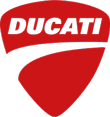Let’s talk about torque and power. How important is each in the 959 Panigale engine for riding on the road and the track?
Marco: The 959 Panigale is designed to ensure maximum enjoyment on the road and breath taking performance on track: for this reason, with respect to the 899 Panigale, the evolution of the engine has led to a maximum power increase from 148hp to 156hp and a significant increase in torque from 5000 rpm.
In particular, while the greater power increases performance in terms of top speed, the torque supplied by the 959 Panigale ensures greater drive and the chance, on track, to enjoy higher performance through the corners. In addition, good torque at medium-low speeds allows for all-round enjoyment of the bike without having to change gear.
What’s the relationship between the 959 Panigale and her big sister? And with the 899 Panigale?
Andrea: The 959 Panigale inherits the technical content of the 1299 Panigale, from the same type of clutch to that of the distribution chain and bases. Close to its big sister in terms of components, it also adopts a part of the electronics, such as the dashboard.
Compared to the 899 Panigale, on the other hand, the increased displacement guarantees the performance delta in terms of power and torque: this is a very good delta despite the fact that the bike, with Euro4 homologation, had to adhere to a series of constraints in terms of emissions, that we have nevertheless been able to compensate for.
Let’s go into greater technical detail: tell us more about this engine.
Andrea: The engine is an evolution of that mounted on the 899 Panigale: we’ve chosen to maintain the same bore and lengthen the stroke, reaching the 60.8mm of the 1299 Panigale. So we have a less extreme Superquadro that nevertheless boasts all of the benefits in terms of torque improvement over a wide range of laps.
Marco: Another interesting aspect is the clutch, that reponds to two fundamental functions. The first is interlocking, which allows for the correct transmission of torque without affecting the rider’s comfort at the controls , while the other is anti-wheeling, essential in guaranteeing the stability of the bike during aggressive track use by a professional rider who brakes hard. This component also mirrors the concept of “perfect balance”, allowing for enjoyable use of the bike on the road and a high-performance use on the track.
Lastly, coming back to Euro4 compatibility, the engine has benefitted from less noisy components from a mechanical point of view and this has allowed to us to create a bike that conforms with noise regulations, without renouncing its typical Ducati sound.
Finally, what does it mean to design a Ducati engine?
Marco: With our work, we know we ‘re not creating simple products, but creating emotions, like in this case in particular: designing a Superbike gives us the pleasure of transmitting the passion we put into building them each day to the Ducati customers.
Andrea: Designing an engine for Ducati basically means working with extreme technologies and pushing development each day, in order to offer the customer emotions that are comparable to those experienced by professional riders on track.
